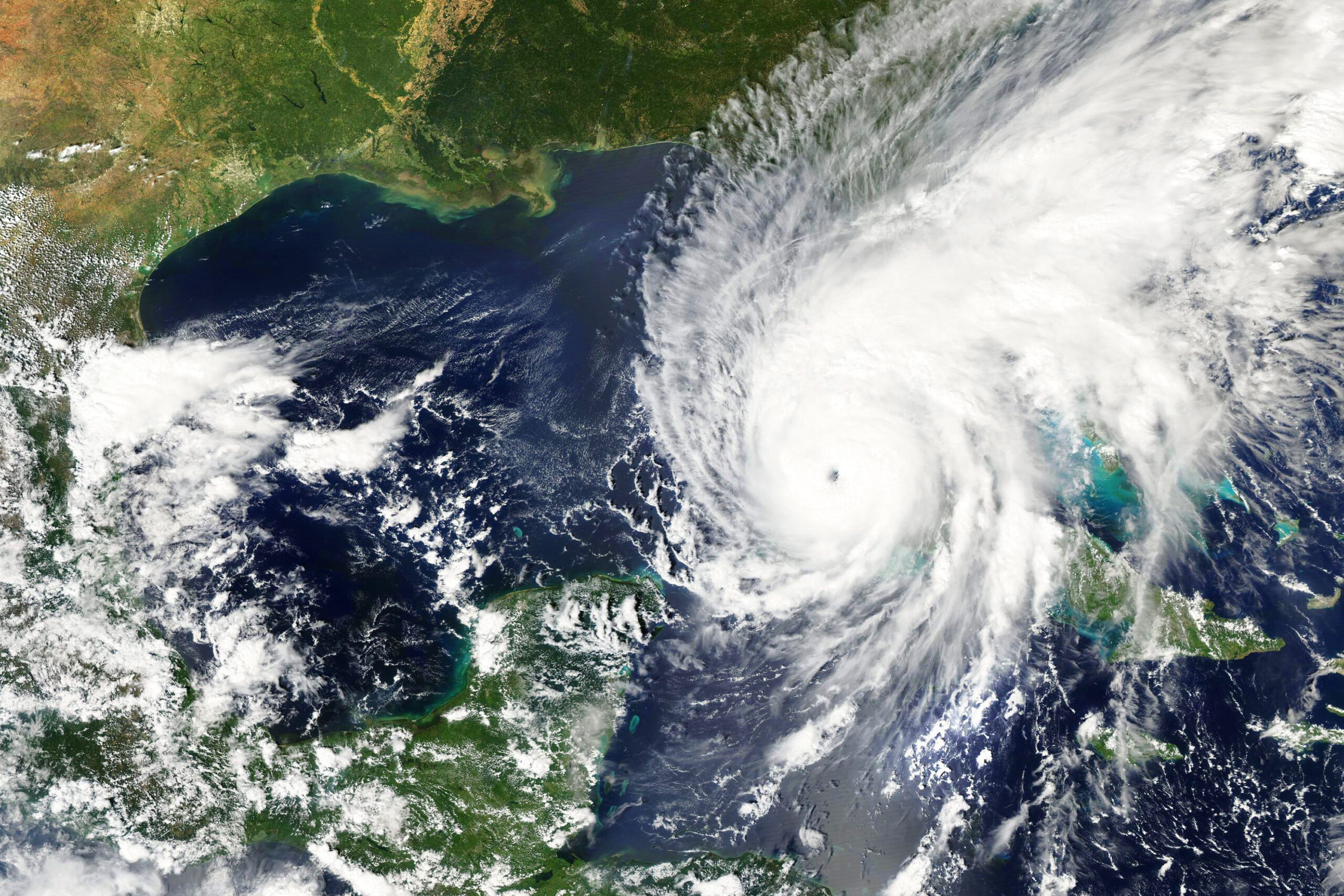Hurricane season is upon us in the United States, and Hurricane Helene and Hurricane Milton have caused extensive devastation to the southeastern part of the country. While it is too soon to know the full economic impact of these events, researchers estimate that the damage to agriculture in Southwest Florida from Hurricane Helene alone is over $125 million. Moody’s analytics estimates the total burden from Helene to be over $34 billion. With back-to-back storm events, agriculture will certainly take an even greater hit in Florida. Early predictions estimated the impact of Hurricane Milton could result in $50 billion in damages.
The broader economic impacts of natural disasters on communities are well known, however we understand little about consumers’ food grocery shopping and spending behaviors during these catastrophic weather events. But a new research paper from the Purdue University Center for Food Demand Analysis and Sustainability (CFDAS) offers new insights.
Ahmad Wahdat, lead research economist from CFDAS, in collaboration with Jayson Lusk, vice president and dean of Oklahoma State University’s Division of Agricultural Sciences and Natural Resources, recently conducted a study addressing this gap. Their paper, titled, “Extreme Weather Events, Food Shopping Behavior, and Card Spending,” is forthcoming in the Journal of Agricultural and Applied Economics Association. Their research provides on food grocery shopping and card spending in Florida in 2022 during Hurricane Ian.
The research examined two key areas: (1) state-level, weekly aggregate retail sales for ten different food and beverage product categories, and (2) county-level, daily consumer spending via debit cards at three types of merchant stores, i.e., convenience, general retail, and grocery. The ten categories of food and beverage products include beverages, commercially prepared foods, dairy, fats and oils, fruit, grains, meats/eggs/nuts, sugars and sweeteners, vegetables and others.
By presenting a more complete picture of the dynamic food shopping behavior during Hurricane Ian, Wahdat and Lusk’s study offers insights that could assist both the government and private sector to develop more effective food supply chain solutions when encountering extreme events. Understanding consumer behavior during these disasters is crucial for disaster preparedness, supply chain resilience and informed policymaking as climate change increases the frequency and severity of major tropical storms.
Using innovative data sources, including daily data on debit card transactions in Florida, alongside aggregate retail sales data, the study revealed several significant patterns in consumer behavior before, during, and after Hurricane Ian. This combination of data sources provides valuable insights into how people prepare for and respond to extreme weather events.
For the food categories included, consumers’ grocery shopping behaviors follow a dynamic pattern. The researchers observe a sharp increase in grocery sales when Hurricane Ian’s advisories were released, from September 19 to 25, followed by a sharp decline in sales during the hurricane’s landfall and exit weeks, and then a rebound in sales from October 10 to 16, when Hurricane Ian had left Florida.
Five days before the hurricane, Wahdat and Lusk observed stockpiling (referred to as sales above baseline spending between September 12 to 18) occurring across all food categories. There was a $236.67 million increase in food retail sales during Hurricane Ian’s advisory week relative to baseline week. Looking closely at the data, most of this stockpiling occurred in commercially prepared food, beverages and meat/egg/nut categories. Further analysis from debit card spending data revealed that consumers card spending was the highest at general retail stores at the onset of hurricane advisories. However, consumers continued to spend at convenience and grocery stores until the day before the storm.
During the hurricane, the authors saw a sharp decline in food retail sales, and lower than baseline-week sales of fruits, vegetables and “other” categories. When sales rebounded after Hurricane Ian’s exit (October 10-16), there was a 9.5 percentage point increase in daily card spending in counties eligible for Disaster-SNAP Aid.
Based on their results, we identify key paths to improve disaster preparedness, supply chain management, and policymaking, including:
- Early Warning Systems: The sharp increase in sales five days before the hurricane highlights the effectiveness of early warning systems. This suggests that timely communication of approaching hurricanes allows residents to prepare adequately.
- Supply Chain Stress: The significant increase in sales ($236.67 million) puts immense stress on food supply chains. Retailers and suppliers need to develop strategies to manage this surge in demand without compromising long-term inventory.
- Food Waste Concerns: The stockpiling behavior, particularly of perishable items like fruits and vegetables, raises concerns about potential food waste. This is especially pertinent given the lower-than-baseline sales of these items during the hurricane.
- Post-Disaster Aid: The 9.5 percentage point increase in spending in Disaster-SNAP eligible counties underscores the importance of timely and targeted post-disaster aid.
This research fills a crucial gap in our understanding of disaster response. By leveraging these insights, both government and private sector entities can develop more effective food supply chain solutions and disaster response strategies. For instance, retailers can better prepare for pre-storm demand surges, while policymakers can refine disaster aid distribution plans based on observed spending patterns.
Moving forward, continued research in this area will contribute to refining our understanding and improving our resilience in the face of extreme weather events. By building on this knowledge, we can work towards creating more robust and responsive systems that better serve communities during times of crisis.
For questions and/or inquiries related to this topic, you can contact us through this form or email awahdat@purdue.edu.



